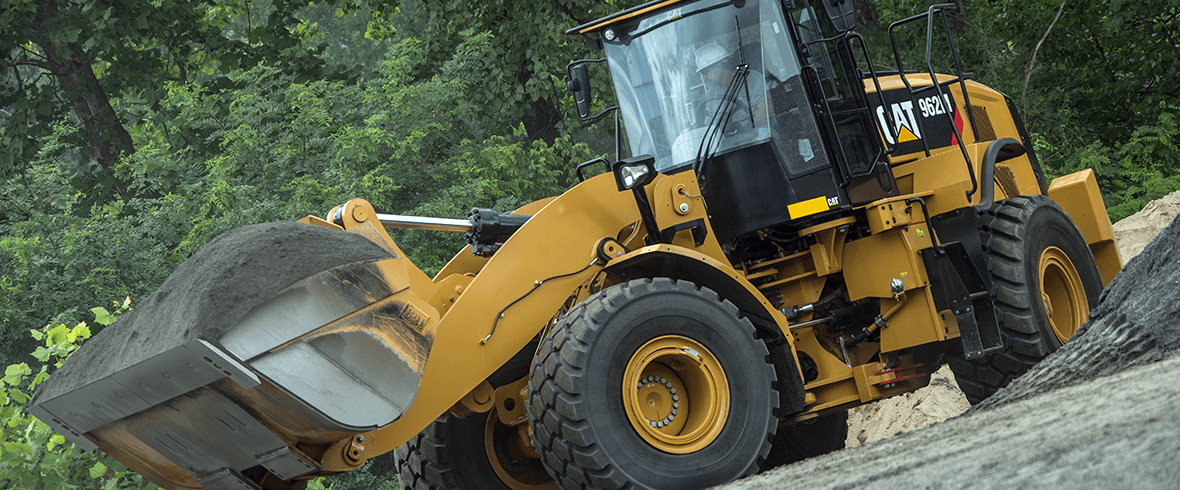
Bulldozer vs. Wheel Loader: How to Choose the Right Rental
When your project involves earthmoving, two machines often come to mind: the bulldozer and the wheel loader. Both are heavy-duty workhorses, but they serve different purposes on a jobsite. If you’re deciding between a bulldozer vs. a wheel loader, this guide will walk you through the key differences, use cases rental considerations so you can make the best choice for your next project with support from The Cat® Rental Store
Bulldozer vs. Wheel Loader: The Basics
Dozers and loaders both belong to the core group of earthmoving equipment you’ll find on nearly any construction site. They share some traits — both are diesel-powered, heavy steel machines with enclosed cabs built for rough terrain — but their design and strengths are distinct:
- ·Bulldozers excel at pushing, pulling, ripping grading.
- ·Wheel loaders shine at scooping, lifting transporting material.
Applications: When to Use Each Machine
The best way to decide between a bulldozer vs. wheel loader rental is to start with your project’s main tasks.
Bulldozer rentals are ideal for:
- Clearing land: Removing trees, brush topsoil
- Leveling ground: Pushing dirt and rock to create a flat surface
- Breaking through hard surfaces: Ripping through compacted soil or rocky layers
- Backfilling: Refilling trenches or holes with loose material
- Rough grading: Shaping larger areas before final grading or paving
Wheel loader rentals are best for:
- Moving loose material: Scooping and hauling gravel, soil, mulch, or debris
- Handling bulk material: Transporting logs, manure other material across the site
- Stockpiling: Building piles for storage or future use
- Truck loading: Transferring material into dump trucks
- Final cleanup: Collecting debris to clear the site
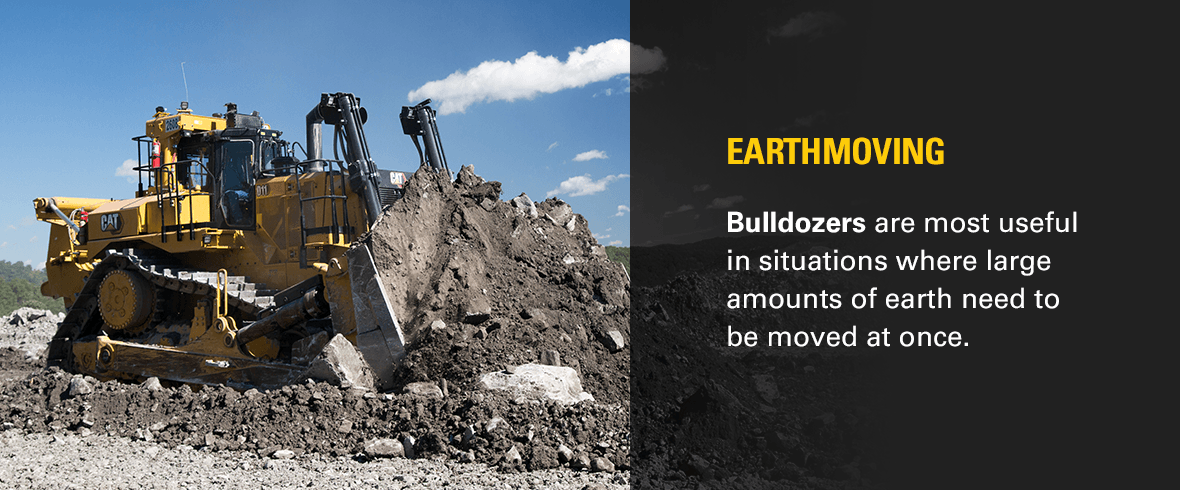
Types of Dozers and Loaders
Not all dozers or loaders are built the same. When renting, it helps to know the main types:
- Crawler dozers: Tracked machines built for rough, uneven terrain.
- Wheel dozers: Tire-based machines with greater mobility on flatter ground
- Full-size loaders: Standard machines ranging from small to very large for heavy-duty work
- Compact loaders: Highly maneuverable, great for landscaping and residential projects with limited space
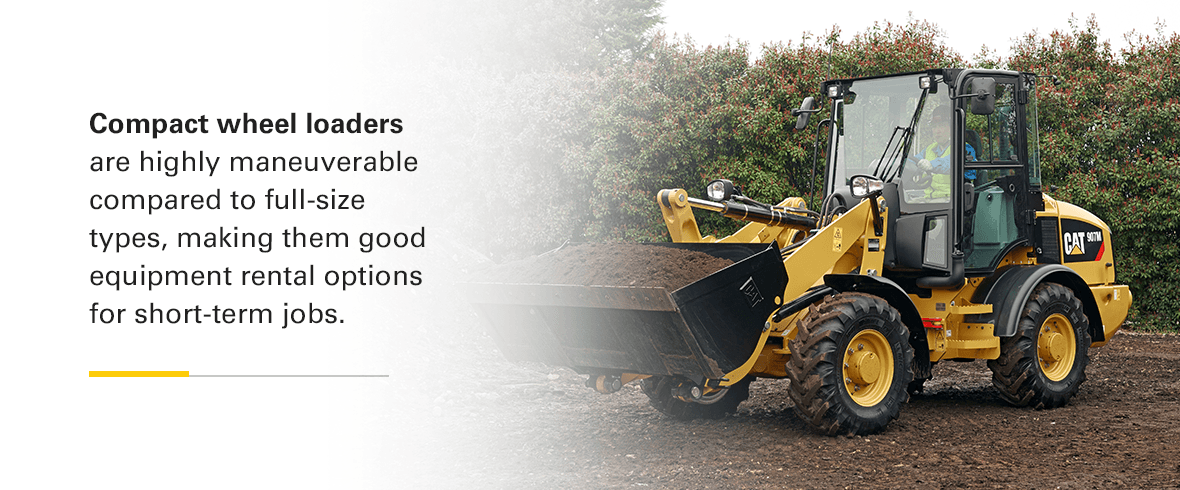
Sizes and Power Options
Both dozers and loaders come in multiple size classes, each with trade-offs in power, productivity cost. Renting lets you scale up or down depending on the project without locking into ownership.
Bulldozer categories:
- Small dozers: 80-104 horsepower
- Medium dozers: 130-363 horsepower
- Large dozers: 452-850 horsepower
Wheel loader categories:
- Compact: 48-121 horsepower
- Small: 170-191 horsepower
- Medium: 249-432 horsepower
- Large: 449-1,847 horsepower
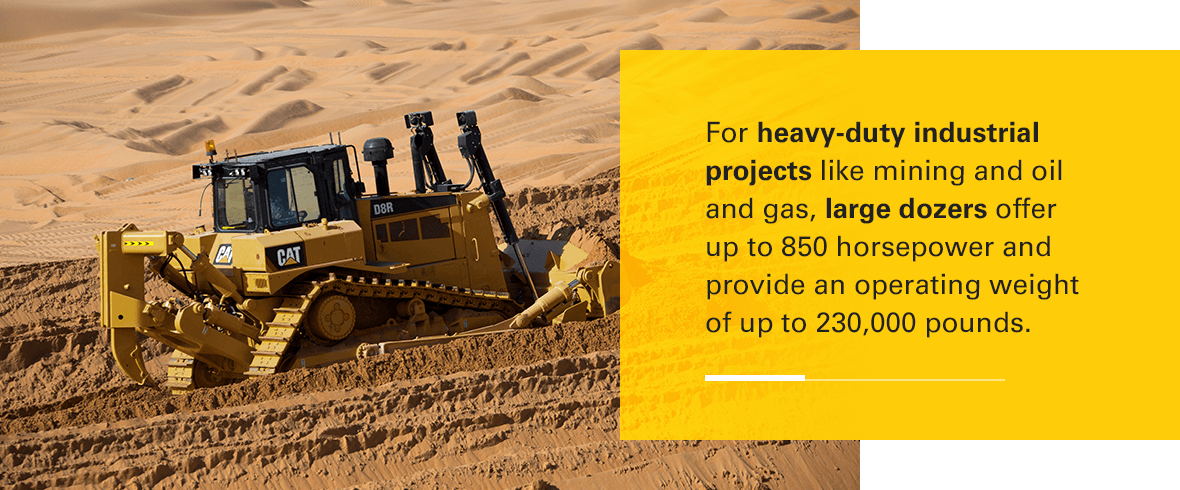
3. Sizes
Bulldozers and wheel loaders come in various sizes, each better suited to specific jobs or work areas. When renting dozers vs. wheel loaders, it’s important to consider the tradeoff between productivity and power when distinguishing which size machine is right for your project. The larger the machine, the more powerful it is, which increases operating costs and safety risks. It can also diminish returns in productivity. Equipment that’s too small for the job, however, can cause projects to take longer than necessary, driving up costs as well.
Bulldozers are divided into the following sizes:
- Mini dozers: The smallest type of dozer is a mini dozer. Within this range, you’ll find dozers under 105 horsepower and an operating weight of under 20,000 pounds.
- Medium dozers: Horsepower ratings in the medium class range from as little as 105 horsepower to 354 horsepower. Medium dozers also include machines with operating weights between 20,000 and 100,000 pounds.
- Large dozers: For heavy-duty industrial projects like mining and oil and gas, large dozers offer up to 850 horsepower and provide an operating weight of up to 230,000 pounds.
Wheel loaders are categorized by the following sizes:
- Compact wheel loaders: As the smallest wheel loader type, compact loaders have a horsepower under 125 and an operating weight of up to 25,000 pounds.
- Small wheel loaders: Small wheel loaders provide between 125 and 200 horsepower and are rated at an operating weight of between 25,000 and 50,000 pounds.
- Medium wheel loaders: Providing between 200 and 400 horsepower, medium wheel loaders can carry up to 80,000 pounds in operating weight.
- Large wheel loaders: Within the large wheel loader category, you’ll find horsepower ranges between 375 and 1,700, with machines boasting an operating weight of over 100,000 pounds. The largest wheel loaders can carry an operating weight of over 500,000 pounds.
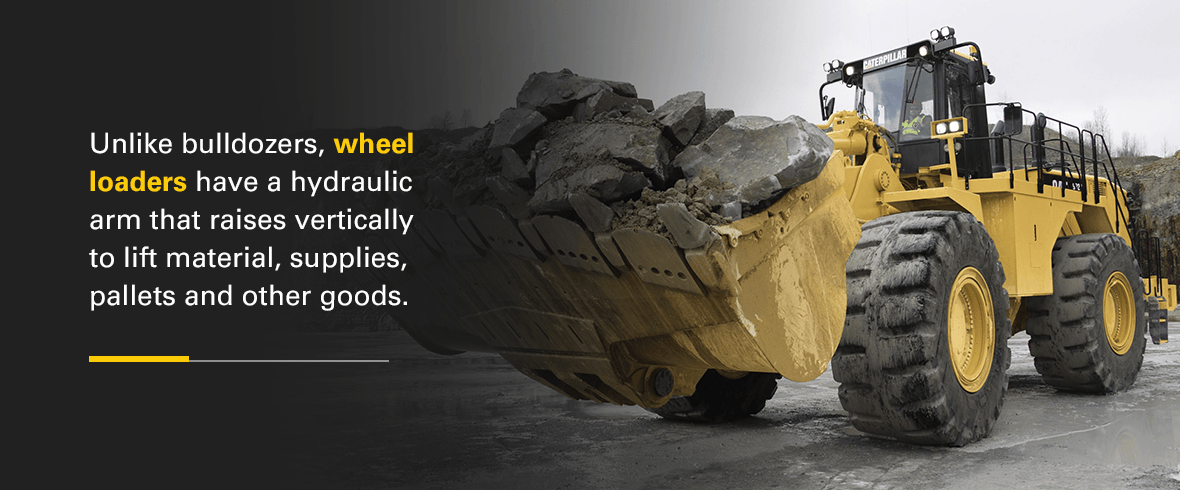
Attachments Expand Functionality
Attachments can transform each machine for specialty jobs. This is one of the biggest advantages of renting — you can match tools to the project without purchasing extras.
Bulldozer blade types:
- S-blade: Straight, narrow, good for grading and backfilling
- U-blade: Curved with side wings, pushes more material
- Semi-U blade: Versatile for soil or heavy material
- Angle blade: Pivots for more precise handling
- PAT blade: Tilts, angles lifts — the most versatile option
Wheel loader attachments:
- Buckets: Standard or specialty for rock and waste
- Forks: Handle pallets, pipes and bulky items
- Grapples: Grab logs, boulders and scrap metal
- Snow pushers: Transform loaders into snow removal machines
Maneuverability and Terrain
Wheel loaders win in maneuverability. Their tires and steering allow them to move faster and navigate tighter spaces. They can also drive on roads without damaging pavement. Bulldozers, particularly crawlers, excel in rugged, uneven terrain thanks to their tracks. They move slower but deliver stability and traction on slopes, wet ground or loose soil.
Transportation Considerations
Both dozers and loaders require trailers for long-distance transport. However, loaders can also be driven on roads to nearby sites. Factor this into your rental planning if your project spans multiple sites.

How to Choose Between a Dozer and Loader Rental
When renting, consider these key questions:
- What are your primary job tasks — pushing or hauling?
- How far does the equipment need to travel on-site or between sites?
- What’s the size of the work area and the project scale?
- What terrain and weather conditions will you face?
- What materials are you handling — soil, gravel, debris, or specialty loads?
By aligning answers with each machine’s strengths, you’ll narrow in on the best rental choice. And if you’re still unsure, rental experts at The Cat® Rental Store can guide you to the right model and attachments.
FAQs: Bulldozer vs. Wheel Loader Rentals
Here are some of the most common questions people ask when comparing these two machines:
Which is better for road construction?
Bulldozers excel in initial clearing and grading; loaders handle material transport and laying down road base.
Can wheel loaders replace bulldozers?
Not directly. Loaders are better at lifting and hauling; dozers specialize in pushing and leveling. They often complement each other on jobsites.
Which is easier to transport?
Wheel loaders since they can drive on roads for short distances. Bulldozers usually need trailers to move between sites.
Why rent instead of buy?
Renting lets you access the right size and attachments for each project without long-term costs. It also eliminates storage, maintenance repair expenses.
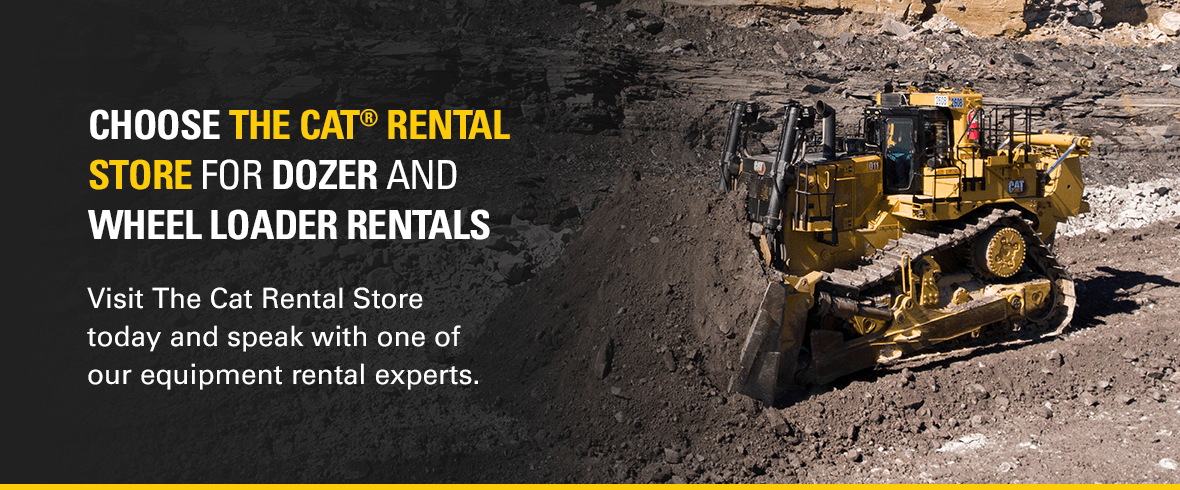
Choose The Cat® Rental Store for Dozer and Loader Rentals
No matter which machine fits your project, The Cat® Rental Store has you covered. With an extensive inventory of earthmoving equipment and specialty work tools, you’ll find exactly what you need — backed by expert advice and dependable service.
Find The Cat Rental Store Near You